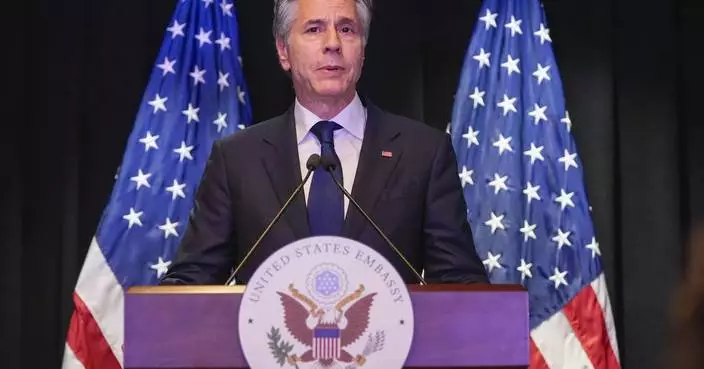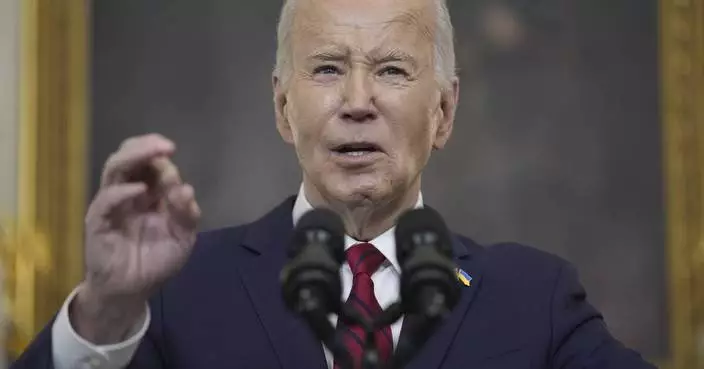U.S. commercial fishing generated more than $144 billion in sales in 2016, buoyed by growth in key species such as sea scallops and American lobsters, the federal government reported on Thursday.
The National Oceanic and Atmospheric Administration said the total of $144.3 billion in sales from commercial fishing in 2016 was up about $100 million from the previous year. The agency released the figure as part of its annual Fisheries Economics of the United States report, one of two reports about the health of fisheries that came out on Thursday.
The economics report states that the industry was boosted by growth in value of some economically critical species, also including shrimp, but other big-money species such as Alaska pollock and pacific salmon were down from the previous year.
The report shows U.S. fisheries holding steady, and continuing to play a critical role in the economies of states from Maine to California, said Ned Cyr, director of NOAA Fisheries Office of Science and Technology.
"The U.S. ports are key," he said.
The economics report also said commercial fishing supported nearly 1.2 million jobs, a figure that is about in line with 2015, but slightly less than 2014.
NOAA officials also released the annual Fisheries of the United States report, which is a broader look at the nation's seafood industry and its recreational and commercial catches. That report stated that U.S. per capita consumption of fish and shellfish grew 1.1 pounds, to 16 pounds, in 2017.
The fisheries report stated that America saw decreases in catch of Atlantic herring and menhaden, which are important fisheries for products such as bait, aquaculture feed and fish oil, in 2017. However, fisheries for yellowfin tuna and Atlantic squid, which are important sources of food for people, were up during the same year.
The report also emphasizes the growing role of aquaculture in the United States, a country with a smaller aquaculture sector than many other major economic players. It states that the U.S. is "not a major aquaculture producer," ranking 16th worldwide in production, although more than half the seafood that the country imports and consumes is farmed.
"It is an increasingly important part. It has been growing steadily over the past few years," said Michael Liddel, a statistician in the NOAA Fisheries Office of Science and Technology.
The most valuable commercial fishing port in the U.S. continues to be New Bedford, Massachusetts, where fish and shellfish brought to dock was worth $389 million in 2017. That total was heavily dependent on scallops, the city's signature export.
The largest amount of seafood came to the docks in Dutch Harbor, Alaska, which is a major port for Alaska pollock, a fish widely used in mass-produced food products such as fish sticks.
KYIV, Ukraine (AP) — A Ukrainian court on Friday ordered the detention of the country’s farm minister in the latest high-profile corruption investigation, while Kyiv security officials assessed how they can recover lost battlefield momentum in the war against Russia.
Ukraine’s High Anti-Corruption Court ruled that Agriculture Minister Oleksandr Solskyi should be held in custody for 60 days, but he was released after paying bail of 75 million hryvnias ($1.77 million), a statement said.
Ukraine’s National Anti-Corruption Bureau suspects Solskyi headed an organized crime group that between 2017 and 2021 unlawfully obtained land worth 291 million hryvnias ($6.85 million) and attempted to obtain other land worth 190 million hryvnias ($4.47 million).
Ukraine is trying to root out corruption that has long dogged the country. A dragnet over the past two years has seen Ukraine’s defense minister, top prosecutor, intelligence chief and other senior officials lose their jobs.
That has caused embarrassment and unease as Ukraine receives tens of billions of dollars in foreign aid to help fight Russia’s army, and the European Union and NATO have demanded widespread anti-graft measures before Kyiv can realize its ambition of joining the blocs.
In Ukraine's capital, doctors and ambulance crews evacuated patients from a children’s hospital on Friday after a video circulated online saying Russia planned to attack it.
Parents hefting bags of clothes, toys and food carried toddlers and led young children from the Kyiv City Children’s Hospital No. 1 on the outskirts of the city. Medics helped them into a fleet of waiting ambulances to be transported to other facilities.
In the video, a security official from Russian ally Belarus alleged that military personnel were based in the hospital. Kyiv city authorities said that the claim was “a lie and provocation.”
Kyiv Mayor Vitali Klitschko said that civic authorities were awaiting an assessment from security services before deciding when it was safe to reopen the hospital.
“We cannot risk the lives of our children,” he said.
Meanwhile, Ukrainian President Volodymyr Zelenskyy was due to hold online talks Friday with the Ukraine Defense Contact Group, which has been the key international organization coordinating the delivery of weapons and other aid to Ukraine.
Zelenskyy said late Thursday that the meeting would discuss how to turn around Ukraine’s fortunes on the battlefield. The Kremlin’s forces have gained an edge over Kyiv’s army in recent months as Ukraine grappled with a shortage of ammunition and troops.
Russia, despite sustaining high losses, has been taking control of small settlements as part of its effort to drive deeper into eastern Ukraine after capturing the city of Avdiivka in February, the U.K. defense ministry said Friday.
It’s been slow going for the Kremlin’s troops in eastern Ukraine and is likely to stay that way, according to the Institute for the Study of War. However, the key hilltop town of Chasiv Yar is vulnerable to the Russian onslaught, which is using glide bombs — powerful Soviet-era weapons that were originally unguided but have been retrofitted with a navigational targeting system — that obliterate targets.
“Russian forces do pose a credible threat of seizing Chasiv Yar, although they may not be able to do so rapidly,” the Washington-based think tank said late Thursday.
It added that Russian commanders are likely seeking to advance as much as possible before the arrival in the coming weeks and months of new U.S. military aid, which was held up for six months by political differences in Congress.
While that U.S. help wasn’t forthcoming, Ukraine’s European partners didn’t pick up the slack, according to German’s Kiel Institute for the World Economy, which tracks Ukraine support.
“The European aid in recent months is nowhere near enough to fill the gap left by the lack of U.S. assistance, particularly in the area of ammunition and artillery shells,” it said in a report Thursday.
Ukraine is making a broad effort to take back the initiative in the war after more than two years of fighting. It plans to manufacture more of its own weapons in the future, and is clamping down on young people avoiding conscription, though it will take time to process and train any new recruits.
Jill Lawless contributed to this report.
Follow AP’s coverage of the war in Ukraine at https://apnews.com/hub/russia-ukraine

Ukrainian young acting student Gleb Batonskiy plays piano in a public park in Kyiv, Ukraine, Thursday, April 25, 2024. (AP Photo/Francisco Seco)










